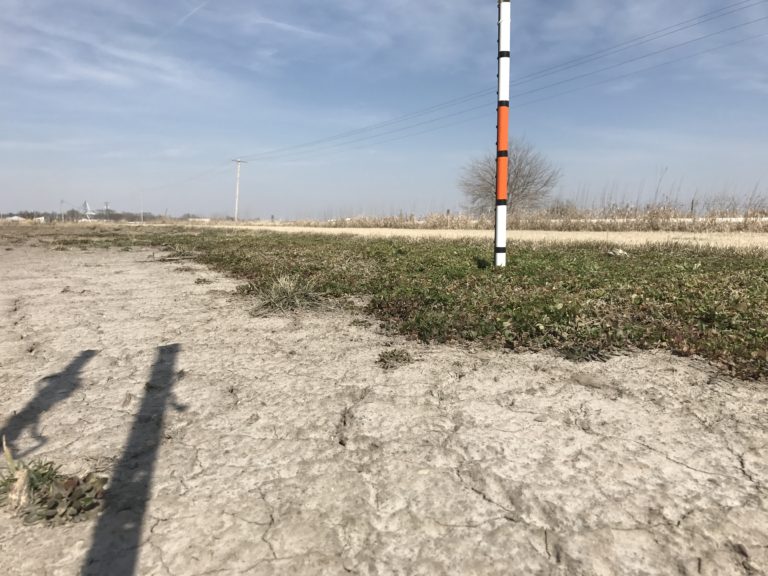One of the best parts of Spring in the Midwest is checking out which varieties of grasses and clovers made it through the long winter months. What’s even better is watching our FIXatioN Balansa Clover wake up and stretch its legs as the days get longer and warmer.
This year, I put a measuring post in one of our FIXatioN plots at the Richland, Iowa Research Farm to document how tall the plants get and when this happens. The post went in the ground on March 20th just as color was starting to return to the tiny plants.
Temperatures are still quite cool in March and vertical growth has not yet begun.
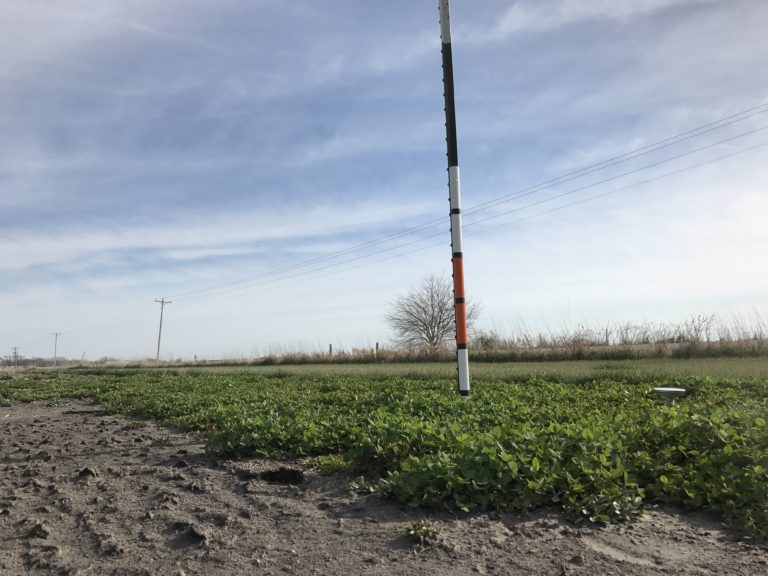
I took another picture on April 8th and the FIXatioN plants had fully greened up and were about ready to start growing.
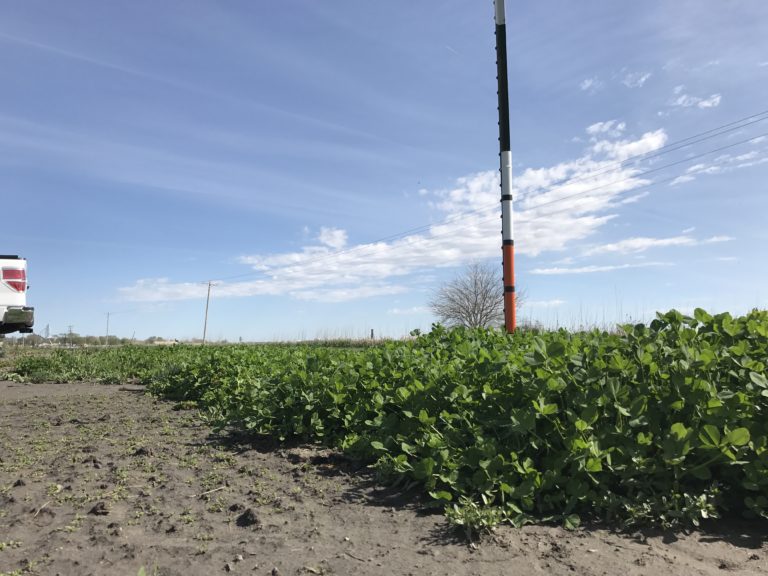
By the middle of April, the plants had gone from about an inch tall to 6” tall. This is about the same time that farmers in the Midwest started planting a few early fields of corn. Using a 1 square foot frame, I harvested the green organic matter. I found that there was 16,304 lbs/Acre of organic matter from the 6” tall plants. Based on a sample I sent to Dairy One for analysis, I determined there were 74 lbs of Nitrogen potential per acre contributed by the FIXatioN.
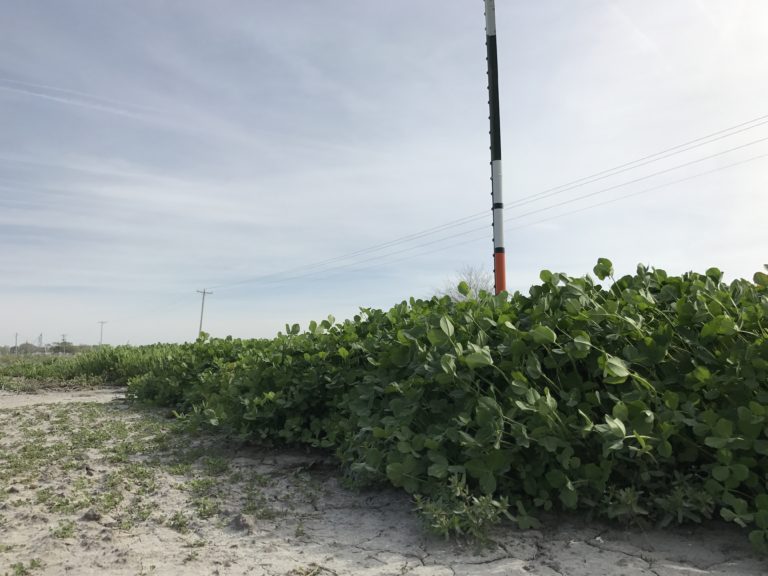
On April 24th I harvested two different parts of the plot. One that was 8” tall and another that was 10” tall. The 8” tall plants yielded 22,826 lbs. of forage and 105 lbs of N/Acre. The 10” tall plants yielded 32,804 lbs. of forage and 152 lbs of N/Acre. If I were a corn farmer, and I held off planting corn for about a week I would have doubled the amount of free organic Nitrogen contributed.
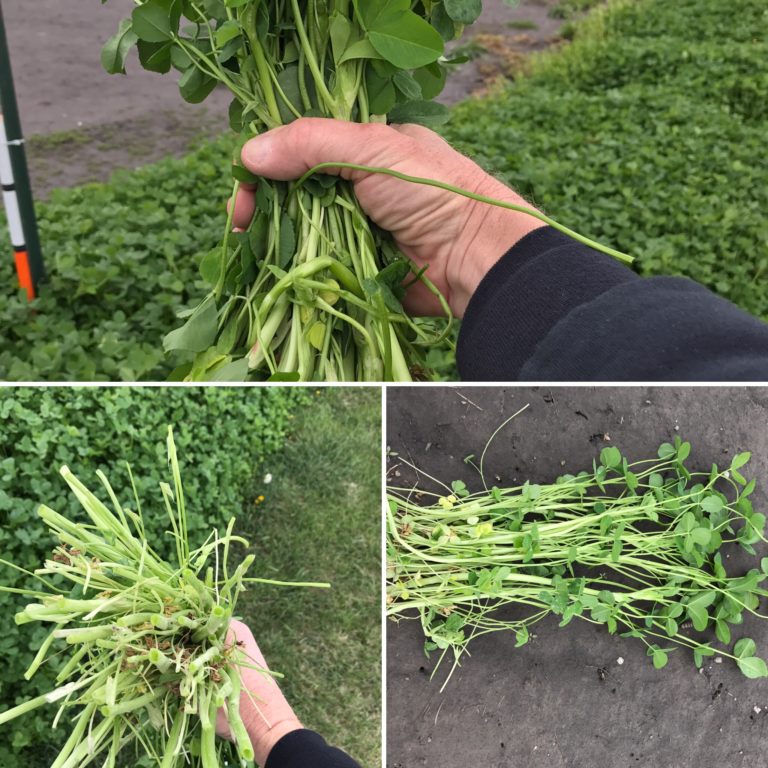
The last 2 weeks of April were warm and sunny with plenty of rain in between. On May 3rd I harvested an area that was 12” tall and another that was a whopping 20” tall. The 12” tall plants contributed 231 lbs of N/Acre and the 20” tall plants chipped in a staggering 399 lbs of N/Acre.
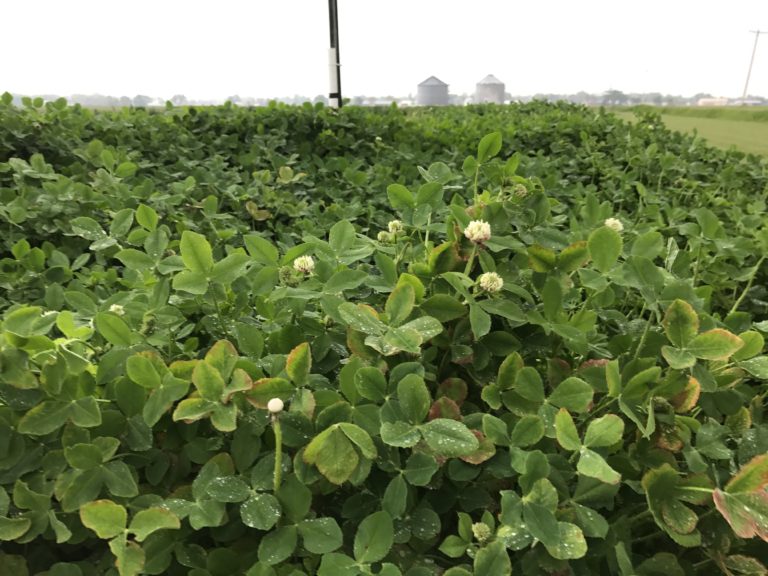
By May 9th, FIXation was just starting to flower so this would be my last cutting before terminating the clover. The plants were just short of 30” tall now and yielded a staggering 118,000 lbs of green forage per acre. The Nitrogen contribution from all that forage was 343 lbs./Acre. By this time, 90% of the corn around the Richland Research Farm had been planted. Waiting 16 days to plant makes a huge difference in the amount of N potential that FIXatioN can contribute to the corn plants. Successfully managing your cover crop has a big impact on the health of the corn crop and its profitability. Terminating the FIXatioN in early May when it just begins to flower is the best way to get the most out of your cover crop investment. With a C:N ratio of 10:1, FIXatioN will rapidly release the Nitrogen it contains to the soil and following cash crop. Roughly 1/3 of the Nitrogen contribution figures above are immediately available for the next crop. This is called PAN (plant available Nitrogen). The lower the C:N ratio of the legume, the more rapidly it decomposes and releases its Nitrogen. Higher C:N ratio covers like cereal rye (20:1) may actually tie up nitrogen which is required to decompose the organic matter. So the moral of this story is; don’t be in such a rush to get your corn acres planted following a legume cover crop like FIXatioN. Time is money!
Below is a chart showing the data that was collected from Brent’s research.
For a printable, PDF version of this blog, click below.

